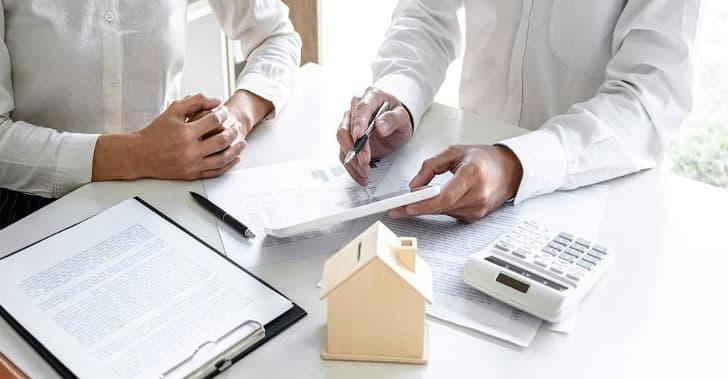Exploring the World of Home Loans: What You Need to Know
Buying a home is one of the most significant financial decisions most people make in their lives. For many, taking out a home loan is necessary to achieve this goal. However, navigating the world of home loans can be overwhelming due to the various types of loans, terms, interest rates, and conditions available. In this article, we’ll explore the key aspects of home loans, explain the different types, and provide guidance on how to make the best decision when applying for a mortgage.

What Is a Home Loan?
A home loan, also known as a mortgage, is a type of loan that a borrower takes out to purchase a house or property. The loan is typically provided by a bank, credit union, or other financial institution. When you take out a home loan, the property you’re buying serves as collateral, meaning the lender can take ownership of the property if you fail to repay the loan according to the agreed terms.
Home loans are typically long-term loans, and the repayment period can vary from 15 to 30 years. They are typically paid back in monthly installments that cover both the principal (the amount borrowed) and the interest (the fee charged by the lender for borrowing the money).
Types of Home Loans
There are several types of home loans available, each with its unique features and benefits. It’s important to understand the differences between them so you can choose the right loan for your needs.
1. Fixed-Rate Mortgage
A fixed-rate mortgage is the most common type of home loan. With a fixed-rate mortgage, the interest rate remains the same throughout the life of the loan. This means that your monthly payments will stay consistent, making it easier to budget and plan for the future.
Benefits of Fixed-Rate Mortgages:
Predictable Payments: Since your interest rate doesn’t change, your monthly payments remain the same for the entire loan term, whether that’s 15, 20, or 30 years.
Long-Term Stability: Fixed-rate mortgages provide stability, which is especially beneficial in times of rising interest rates.
2. Adjustable-Rate Mortgage (ARM)
An adjustable-rate mortgage (ARM) has an interest rate that can change over time, typically in relation to an index (such as the LIBOR or prime rate). In the beginning, ARMs often offer lower interest rates than fixed-rate mortgages, making them attractive to some borrowers. However, the rate may increase after a certain period, leading to higher monthly payments.
Benefits of ARMs:
Lower Initial Rates: The initial interest rate on an ARM is usually lower than that of a fixed-rate mortgage, which can make monthly payments more affordable at the beginning of the loan.
Potential for Lower Payments: If interest rates stay low or don’t rise significantly, your payments may stay lower than those of a fixed-rate mortgage.
However, it’s important to remember that interest rates can rise, and if they do, your monthly payments could increase significantly over time.
3. FHA Loan
FHA (Federal Housing Administration) loans are government-backed loans designed to help first-time homebuyers and those with less-than-perfect credit. These loans require lower down payments and offer more flexible qualification requirements than conventional loans.
Benefits of FHA Loans:
Lower Down Payment: FHA loans typically require a down payment as low as 3.5%, making homeownership more accessible for people with limited savings.
Easier Qualification: FHA loans have more lenient credit score requirements, which makes them a good option for people with lower credit scores or a limited credit history.
4. VA Loan
VA loans are offered to current and former members of the U.S. military and their families. These loans are backed by the Department of Veterans Affairs (VA), and they offer several advantages over conventional loans.
Benefits of VA Loans:
No Down Payment: VA loans often don’t require a down payment, which can make buying a home more affordable for veterans and their families.
No Private Mortgage Insurance (PMI): Unlike many other loans, VA loans do not require PMI, even if the borrower does not put down 20% of the home’s value.
Competitive Interest Rates: VA loans often come with lower interest rates than conventional loans.
5. USDA Loan
A USDA (United States Department of Agriculture) loan is a government-backed mortgage loan designed to help people in rural and suburban areas purchase homes. These loans offer several benefits, particularly for low-to-moderate-income borrowers.
Benefits of USDA Loans:
No Down Payment: USDA loans often don’t require a down payment, making them an attractive option for people who cannot afford a large upfront payment.
Lower Interest Rates: USDA loans typically offer competitive interest rates, which can make homeownership more affordable in the long run.
Flexible Income Requirements: USDA loans are intended for low- to moderate-income families, and the eligibility requirements are more lenient compared to conventional loans.

Understanding Interest Rates and Terms
When you apply for a home loan, the interest rate you’re offered will significantly impact the overall cost of your mortgage. Interest rates can vary depending on several factors, including the type of loan, your credit score, and the term of the loan.
Types of Interest Rates:
Fixed Interest Rate: With a fixed-rate mortgage, the interest rate stays the same for the entire loan term.
Variable Interest Rate: With an ARM, the interest rate can change over time, usually after an initial fixed-rate period.
Loan Terms:
Home loans typically come in two main terms: 15 years and 30 years. A 15-year mortgage allows you to pay off the loan more quickly, but your monthly payments will be higher. On the other hand, a 30-year mortgage offers lower monthly payments but may result in paying more interest over the life of the loan.
The Home Loan Application Process
Applying for a home loan involves several steps, and it’s important to be prepared for the process. Here’s a general overview of what to expect when applying for a home loan:
Check Your Credit Score: Lenders use your credit score to determine your eligibility for a loan and the interest rate you will be offered. A higher credit score generally results in a lower interest rate.
Gather Your Financial Documents: Lenders will require several documents to process your loan application, including proof of income, tax returns, bank statements, and information about your debts.
Choose a Lender: Shop around for lenders to compare interest rates, loan terms, and fees. You can apply with banks, credit unions, or online lenders.
Get Pre-Approved: Many homebuyers get pre-approved for a loan before they start house hunting. Pre-approval gives you an idea of how much you can borrow and can make you a more attractive buyer to sellers.
Complete the Application: Once you find the right lender, you’ll complete the loan application and submit your documents. The lender will review your application, credit score, and financial information.
Close on the Loan: After your loan is approved, you’ll go through the closing process, which involves signing paperwork and finalizing the sale. The lender will provide you with the funds to purchase your home.
A Real-Life Example: Mark and Lisa’s Home Purchase

Mark and Lisa had been renting an apartment for years but were ready to buy their first home. They decided to apply for a fixed-rate mortgage because they valued stability and wanted predictable monthly payments. After checking their credit scores, they realized they had excellent credit, which allowed them to secure a low interest rate of 3.5% for a 30-year mortgage.
They applied with a local bank and were approved for a loan amount that fit their budget. Mark and Lisa were able to put down 20% of the home’s value, which helped them avoid paying for private mortgage insurance (PMI). After completing the paperwork and closing the deal, they moved into their new home and began their journey as homeowners with a reliable and affordable mortgage.
Conclusion
Home loans are an essential part of the home-buying process. Understanding the different types of loans, interest rates, and terms will help you make an informed decision when purchasing your home. Whether you opt for a fixed-rate mortgage, an adjustable-rate mortgage, or a government-backed loan like an FHA or VA loan, it’s important to find the loan that best fits your financial situation and goals.
Remember to shop around for the best interest rates, gather your financial documents ahead of time, and consider getting pre-approved before you start house hunting. By doing so, you’ll be well on your way to securing the right home loan for your future.
